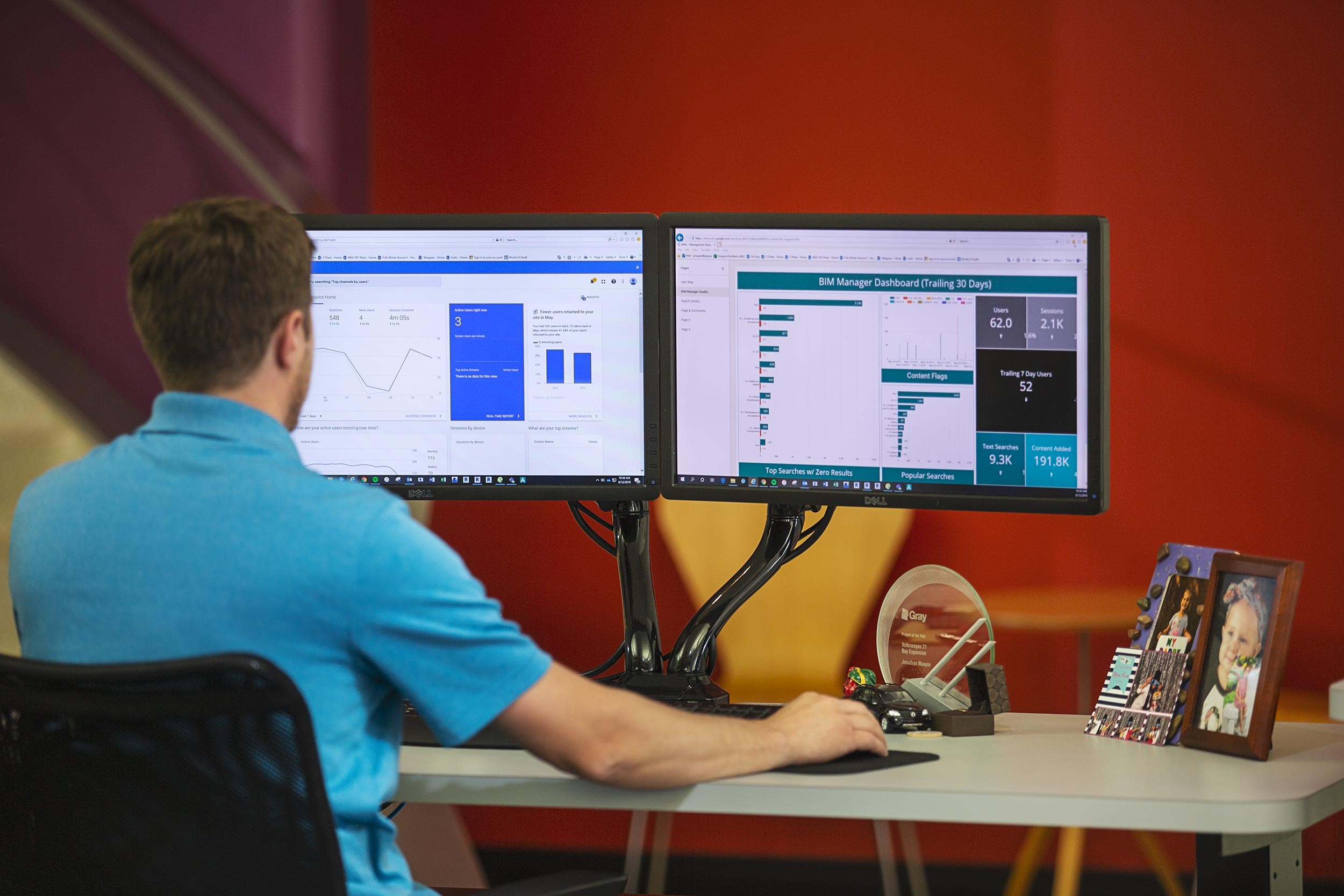BIM CONTENT STRATEGY
Drive efficient processes to help ensure predictable and successful project outcomes for your firm.


ELIMINATE WASTED TIME
Eliminate the wasted time searching for information, recreating work that can’t be found, or reusing work that’s unapproved.

SINGLE SOLUTION
Provide a platform that serves as the single source for content management across the entire firm.

IMPROVE PERFORMANCE
Collaborate around content to better share information and help strengthen team performance.
Free Up Your Design Talent
An easier way to search, find and use content takes the burden of solving content management off your firm’s shoulders and allows teams to focus on their core design strengths.
Create a seismic shift from the time spent on managing content and searching for information to having more time available for design, quality control and assurance.

Ensure Complete Adoption
People process visual images faster than any other type of data, making AVAIL’s visual interface a quicker and more intuitive way for users to identify what they need.
Move to a system where content management is a core functionality designed for the end user and the economic impact it can make on your firm.
Internally we agreed to start with 50 licenses but after 8 months we increased our adoption with 136 additional users.
Aaron Wessel, BIM Manager
Cuningham Group
Uncover insights buried in your data and workflows with dashboard reports that help you eliminate the guess work.

Inform Design Practices
Capture intellectual property and gain visibility into how your workflow is being managed. Content analytics combined with other data sources provide a holistic view.
A Single Source to Access All Your Content Regardless of File Type or Location
SUPPORT FUTURE APPLICATIONS AND WORKFLOWS
Your content is being created by various applications and likely resides in more than one location. AVAIL has been designed as a file-agnostic platform that will work with any current or future application.
REDUCE TECHONOLOGY RISK
With content continuing to expand, firms don’t want or need more systems to manage. AVAIL is a single-source approach to manage content and provide continuity throughout a project lifecycle.

Increasing Design Team Productivity for the Industry's Leading AEC Firms

“I was hands-down sold and frustrated that we weren’t already using it!”

“We can dive into data and metrics and understand what’s getting used and not, and by whom.”

"Better indexing means less time lost looking and fewer frustrations."

